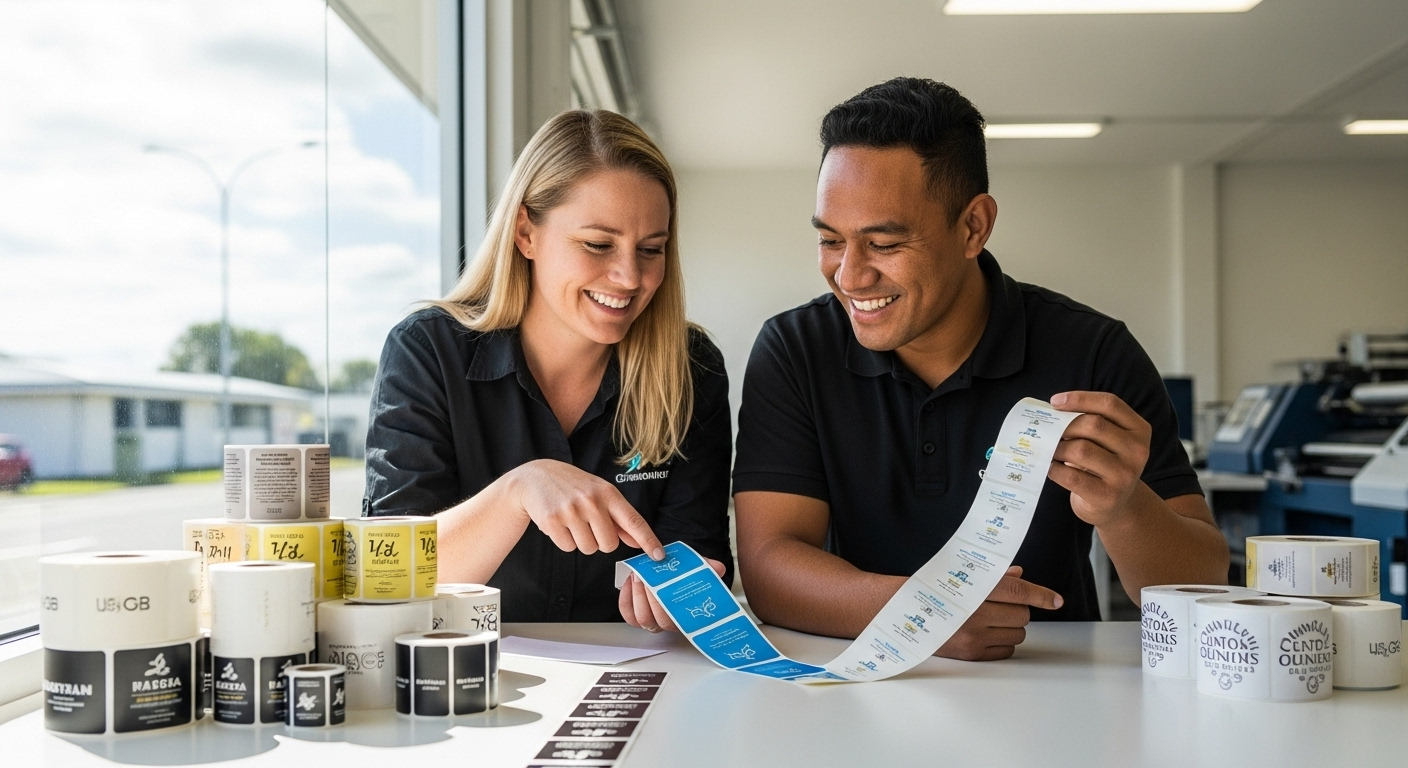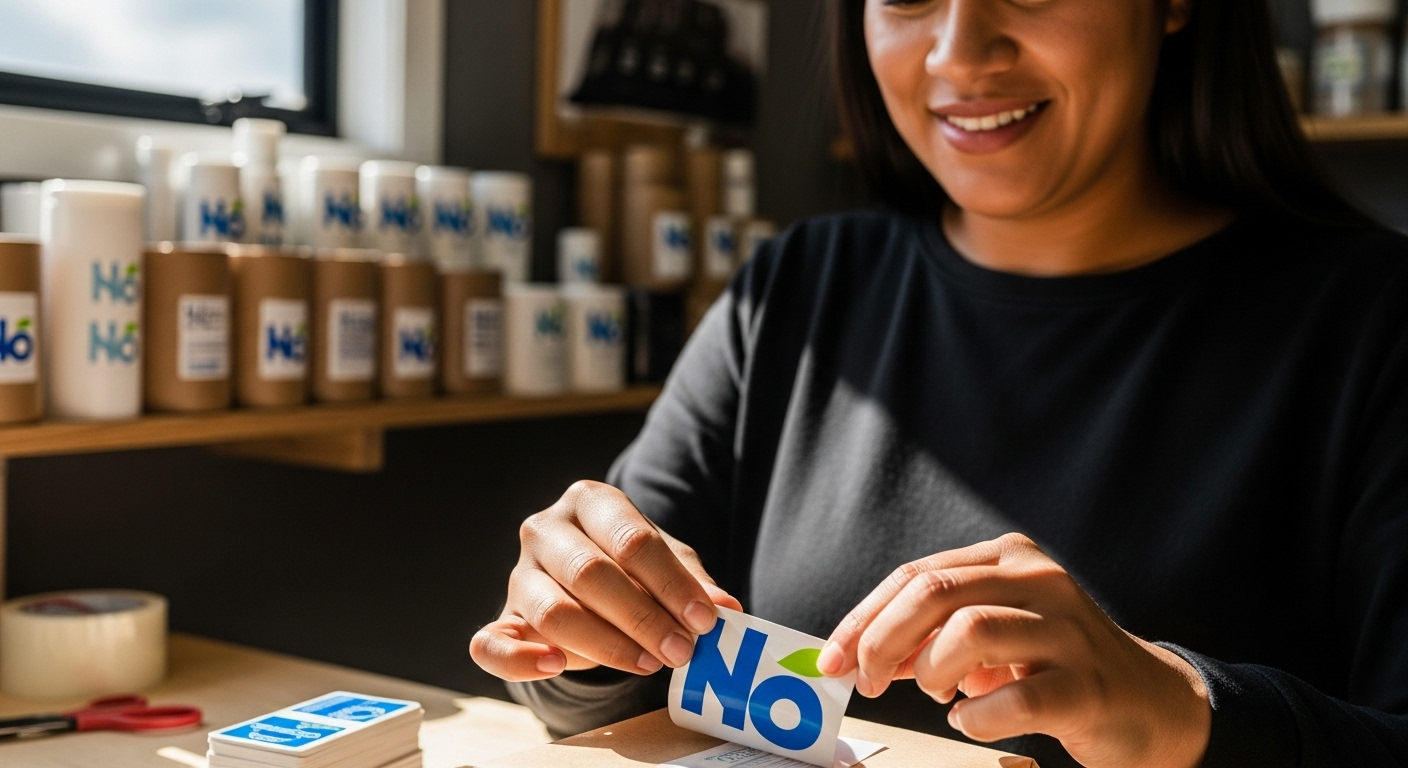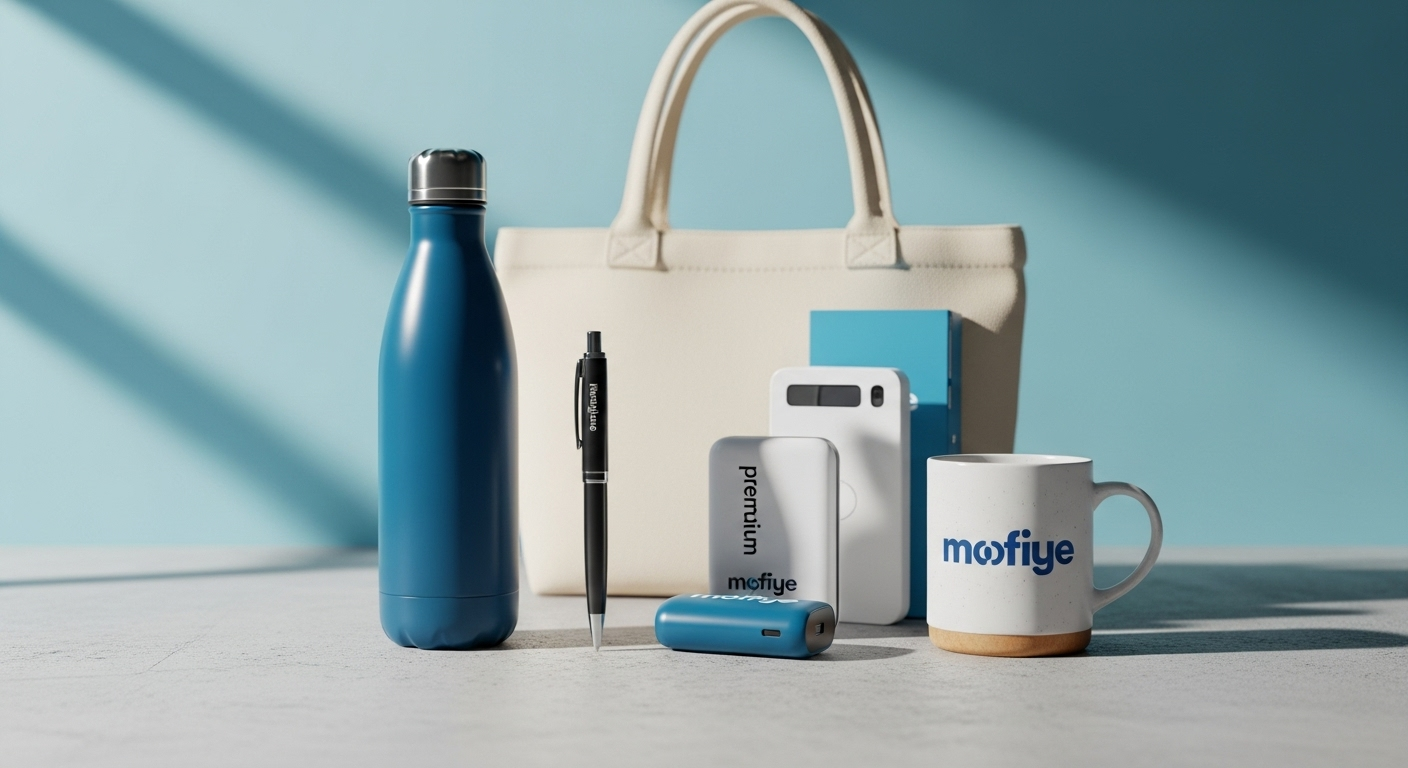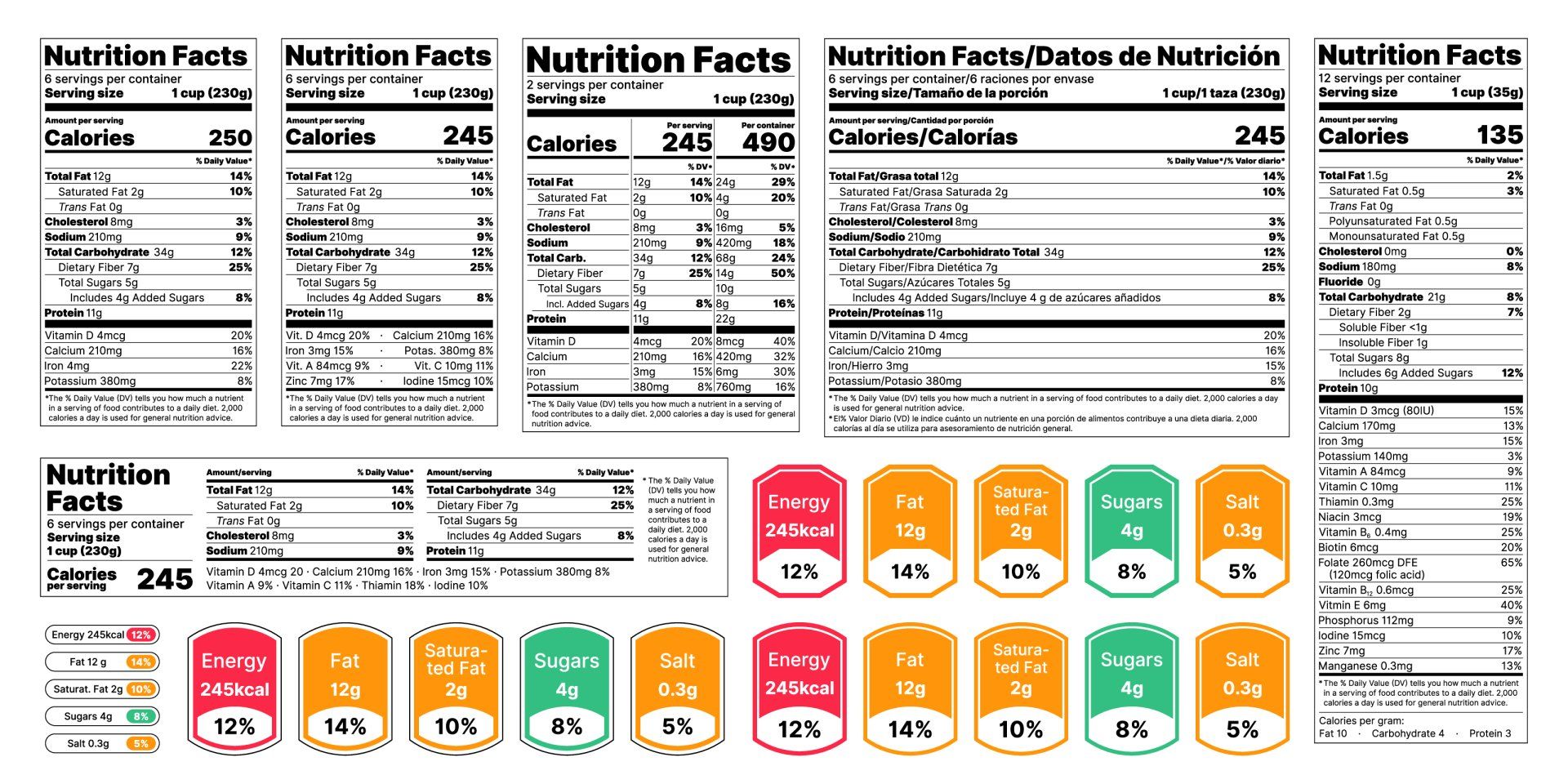NZ Cosmetic Labels: Your Ultimate Guide to Regulations & Dazzling Designs

Your Comprehensive Guide to Cosmetic Labels in New Zealand
In the vibrant and competitive world of cosmetics, your product's label is often the first point of contact with your customer. It’s not just a wrapper; it’s a storyteller, a brand ambassador, and a crucial source of information. For businesses across New Zealand and beyond, understanding the intricacies of cosmetic labels—from regulatory compliance to material science and captivating design—is paramount.
At T & D Print, we understand the unique challenges and opportunities that come with creating effective cosmetic labels. We're here to guide you through everything you need to consider to ensure your products stand out on the shelf and meet all necessary requirements.
Key Takeaways
- New Zealand cosmetic labels must comply with the Cosmetic Products Group Standard 2020, overseen by the EPA, including ingredient listings (INCI), manufacturer details, and batch codes.
- A significant regulatory update is the ban on PFAS in cosmetics, set to take effect from December 31, 2026.
- Choosing the right label material is crucial for durability, especially resistance to moisture, oils, and chemicals; BOPP and Polyester (PET) are excellent choices.
- Strategic label design, incorporating elements like minimalism, bold typography, and metallic foils, is essential for brand appeal and attracting your target audience.
- Working with an experienced printer like T & D Print can streamline the entire process, from design to compliant, high-quality printing.

Navigating New Zealand Regulatory Compliance for Cosmetic Labels
When it comes to cosmetic labels in New Zealand, compliance isn't just a suggestion; it's a legal obligation. The primary framework governing cosmetics is the Cosmetic Products Group Standard , issued under the Hazardous Substances and New Organisms Act 1996 and overseen by the Environmental Protection Authority (EPA).
Here’s what your cosmetic labels must include:
- Ingredient Listing: Ingredients must be listed in descending order of weight, typically using International Nomenclature Cosmetic Ingredient (INCI) names. Any potential allergens must be clearly highlighted.
- Manufacturer/Importer Contact Details: Labels must provide the contact details of the New Zealand-based importer or manufacturer. This ensures accountability and provides a point of contact for consumers.
- Batch Codes: A batch code or lot number is essential for traceability, allowing for product recalls if necessary.
- Specific Warnings: Any necessary warnings or precautions for safe use must be clearly displayed.
- Product Identification: The product's name and its purpose should be evident.
- Net Content: The quantity of the product (e.g., weight or volume) must be stated.
It's also important to stay abreast of recent updates. For instance, New Zealand is actively phasing out PFAS (per- and polyfluoroalkyl substances) in cosmetics. The manufacture and import of cosmetics containing PFAS will be banned from December 31, 2026. Even non-hazardous cosmetics with hazardous ingredients must comply with these stringent labelling obligations.
Material Science and Durability: Choosing the Right Label
Cosmetic products often live in environments prone to moisture, oils, and frequent handling. This means your labels need to be more than just pretty; they need to be durable. Selecting the right material is critical for the longevity and integrity of your cosmetic labels.
Here are some of the best choices for cosmetic labels:
- BOPP (Biaxially Oriented Polypropylene): This is an excellent material choice for cosmetic labels due to its high resistance to moisture, oils, and chemicals. BOPP labels are flexible, come in various finishes (clear, white, metallic), and are ideal for products that might come into contact with water or product residue, such as lotions, shampoos, and creams.
- Polyester (PET): Polyester labels are known for their exceptional durability , making them suitable for handling extreme temperatures, UV light, and chemicals. PET is a robust option for products requiring a high level of resilience, often found on outdoor-use cosmetics or those in harsh environments.
- Vinyl: Known for its flexibility and waterproof properties, vinyl is another strong contender for cosmetic labels. It conforms well to squeezable bottles and curved surfaces, making it versatile for various packaging types.
Beyond traditional materials, we're seeing a growing demand for sustainable options. Biodegradable films and recycled papers offer eco-conscious brands an opportunity to align their packaging with their values, appealing to a consumer base increasingly prioritising environmental responsibility.

Design, Branding, and Modern Trends for Cosmetic Labels
A well-designed label can transform a product from ordinary to extraordinary. It’s about creating an emotional connection, conveying your brand's story, and capturing attention in a crowded market. Our team at T & D Print excels in label and packaging design , ensuring your vision comes to life.
Consider these design elements and modern trends:
- Minimalism: Clean lines, ample white space, and a focus on essential information create a sophisticated and modern aesthetic.
- Bold Typography: Using unique and striking fonts can make your brand instantly recognisable and communicate your product's personality.
- Colour Psychology: Carefully chosen colours evoke specific emotions and perceptions. Soft pastels might suggest natural ingredients, while vibrant hues could signify energy and youth.
- Vintage Aesthetics: Retro-inspired designs, often featuring intricate illustrations and classic fonts, offer a sense of nostalgia and artisanal quality.
- Custom Illustrations: Unique, hand-drawn or digitally illustrated elements can give your product a distinctive, artistic touch that stands out.
- Metallic Foils: Adding gold or silver foil, a specialty of ours for foil labels , instantly elevates a product, conveying luxury and premium quality.
Your label design should resonate with your target audience, reflecting their values and aspirations. It’s an investment in your brand's identity and market appeal.
The End-to-End Process: From Concept to Cosmetic Label
Creating the perfect cosmetic label involves a journey from initial concept to the final printed product. We aim to make this process seamless and stress-free for you:
- Understanding Legal Obligations: We start by ensuring you understand all the New Zealand regulatory requirements, helping you compile the necessary information for your labels.
- Material Selection: Based on your product, packaging, and desired durability, we'll guide you in choosing the most suitable label material.
- Compelling Design: Whether you have a design ready or need assistance, our in-house experts can help create a label that is both compliant and captivating. We focus on legibility, brand consistency, and aesthetic appeal.
- Printing and Finishing: Utilising state-of-the-art printing technology, we produce high-quality labels with precision. We offer various finishes, including matte, gloss, and special effects like foiling, to achieve your desired look.
- Quality Control and Delivery: Every batch undergoes rigorous quality checks to ensure perfection. We then provide free nationwide delivery across New Zealand, ensuring your labels arrive safely and on time.
At T & D Print, we pride ourselves on being a one-stop shop for all your custom label printing needs. With low minimum quantities, fast turnarounds, transparent pricing, and a team of in-house experts, we are committed to bringing your cosmetic products to life with exceptional labels.
Ready to create cosmetic labels that truly represent your brand and comply with all regulations? Contact us today to discuss your project!
_Disclaimer: The information provided in this article is intended for general guidance and informational purposes only, and does not constitute legal or professional advice. While we strive to ensure the accuracy of the information, regulations can change. We recommend consulting with legal professionals or the appropriate regulatory bodies (e.g., EPA New Zealand) to ensure full compliance with all current requirements for your specific products._












